Longmen Si Zhuozhang: An Insider’s Guide to the Best Kept Secrets of Chinese Culture

An Essential Guide to Visiting Longmen Si Zhuozhang
In This Guide
- An Essential Guide to Visiting Longmen Si Zhuozhang
- The Rich History and Legends of Longmen Si Zhuozhang
- Main Highlights: What You Absolutely Can’t Miss
- Planning Your Visit: A Practical Guide
- Tickets: Prices, Booking, and Tips
- How to Get There: A Complete Transportation Guide
- Local Cuisine and Accommodation Nearby
- Frequently Asked Questions
- Final Thoughts on Your Trip
Nestled in the serene embrace of the Longmen Mountain range, Longmen Si Zhuozhang (龙门寺) stands as a testament to China’s rich historical tapestry and spiritual heritage. This ancient temple, founded during the Northern Qi Dynasty, is not just an architectural marvel but also a spiritual sanctuary that attracts both pilgrims and curious travelers alike. As you approach the temple, the majestic peaks and lush valleys surrounding it create a breathtaking backdrop, inviting you to step back in time and immerse yourself in the stories etched into its very stones.
Longmen Si Zhuozhang is renowned not only for its stunning natural beauty but also for its intricate craftsmanship and historical significance. With each hall and corridor meticulously arranged along a central axis, visitors can explore the evolution of Chinese architecture through the ages—from the elegant simplicity of the Tang Dynasty to the robust designs of the Ming and Qing Dynasties. The temple is home to several revered relics, including the “Eight Treasures of Longmen,” which are unique features that highlight the temple’s cultural wealth and artistic ingenuity.
Whether you are a history buff, a spiritual seeker, or an adventure enthusiast, Longmen Si Zhuozhang offers a unique glimpse into the past, where every corner reveals a new layer of significance. As you wander through its sacred halls and lush surroundings, you will find that this site is not merely a destination but an experience that resonates deeply with the essence of Chinese culture. Prepare to be captivated by its history, inspired by its tranquility, and enchanted by the harmony of nature and architecture that defines this remarkable place.
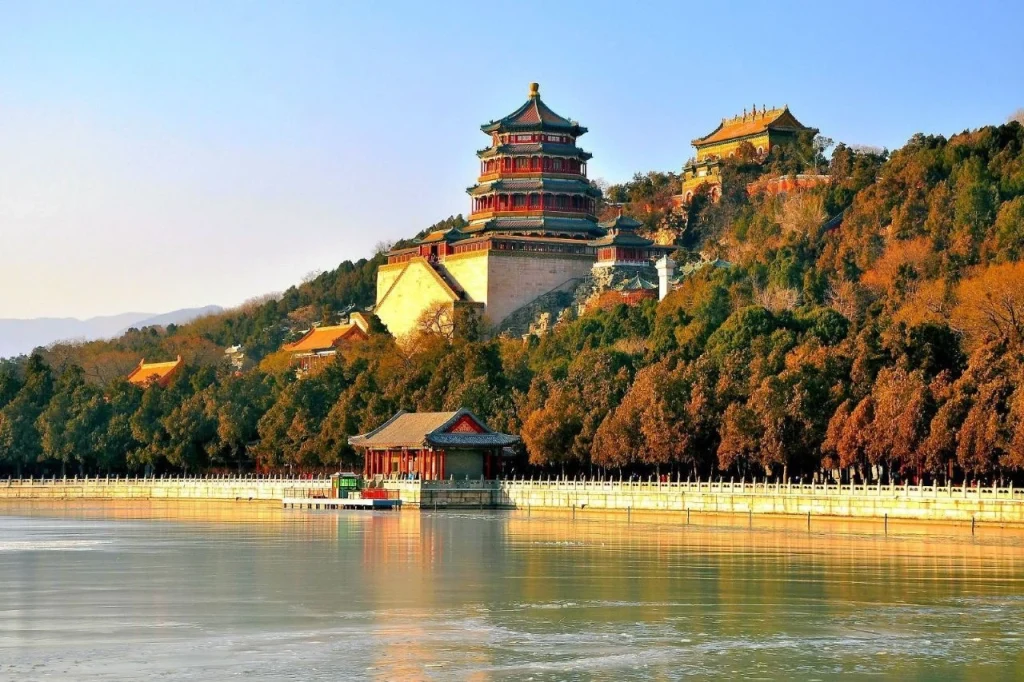
Longmen Si Zhuozhang.
In this guide, we will explore the essential details to make your visit to Longmen Si Zhuozhang both memorable and enriching, ensuring that you leave with a profound appreciation for this hidden gem in China’s cultural landscape.
The Rich History and Legends of Longmen Si Zhuozhang
A Tapestry of History and Legends at Longmen Si Zhuozhang
Nestled in the picturesque surroundings of Longmen Mountain, the Longmen Si Zhuozhang (浊漳河龙门寺) stands as a testament to centuries of Chinese history, spirituality, and artistry. Established during the Northern Qi Dynasty in the mid-6th century, this temple complex is not just a place of worship but also a vital part of the cultural heritage of the region. Here, history intertwines with legend, creating a rich tapestry that continues to captivate visitors today.
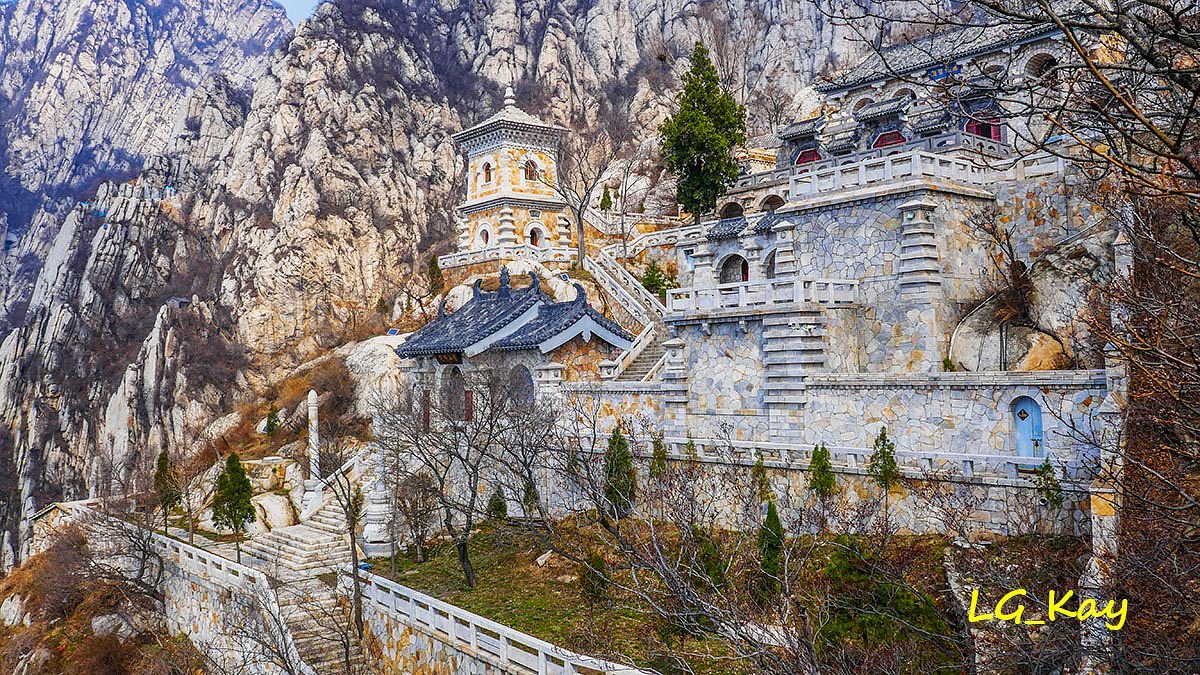
Longmen Si Zhuozhang.
Origins and Architectural Significance
The temple’s origins can be traced back to the Tianbao period of the Northern Qi Dynasty, founded by the revered monk Facong. Initially named Fahua Temple, it was later renamed Longmen Temple during the Northern Song Dynasty. The temple’s architecture reflects a blend of styles from various dynasties, showcasing the evolution of Chinese religious architecture over time.
The temple complex features a central axis with three main courtyards, flanked by meditation halls and scripture houses. The most notable structures include the Daxiong Hall, constructed in 1098, known for its intricate roof design and historical significance. Visitors can marvel at the West Side Hall, a relic from the Later Tang Dynasty, which exemplifies the architectural sophistication of the period with its free-standing wooden structure, devoid of internal columns.
The Eight Treasures of Longmen
Longmen Si Zhuozhang is celebrated for its unique features, collectively referred to as the “Eight Treasures.” These include:
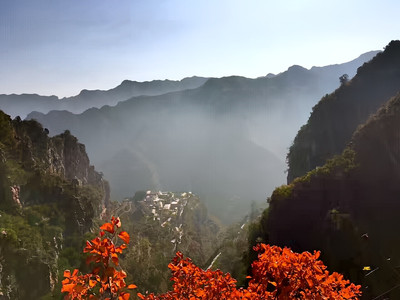
Longmen Si Zhuozhang.
- Dragon’s Mouth Water Spout – A natural fountain that symbolizes the flowing energy of the landscape.
- Stone Valley Dragon Gate – A striking rock formation reminiscent of a dragon’s gates.
- Golden Lamp Oil Flow – A mystical stream that seems to shimmer under sunlight.
- Banner Pole Sacred Brain – A revered site for devotees that reflects the temple’s spiritual significance.
- Five Sandalwood Noisy Locust – A tree known for its vibrant life and connection to local legends.
- Transparent Spirit Stele – An inscription that tells tales of ancient wisdom and enlightenment.
- Bodhisattva Welcoming Guests – A statue embodying compassion and hospitality.
- Cliff Stone Buddha – A serene representation of Buddha carved into the cliffside, inviting contemplation and peace.
These treasures not only enhance the aesthetic appeal of the temple but also serve as focal points for pilgrims and tourists alike, each with its own story and significance.
Legends of Longmen
The temple is steeped in fascinating legends that add a mystical aura to its revered status. One popular legend recounts the tale of Buddha’s Visit, where it is said that the Buddha himself descended to bless the site, leading to its establishment as a sacred place. This narrative is often shared with visitors, enhancing their spiritual experience at the temple.
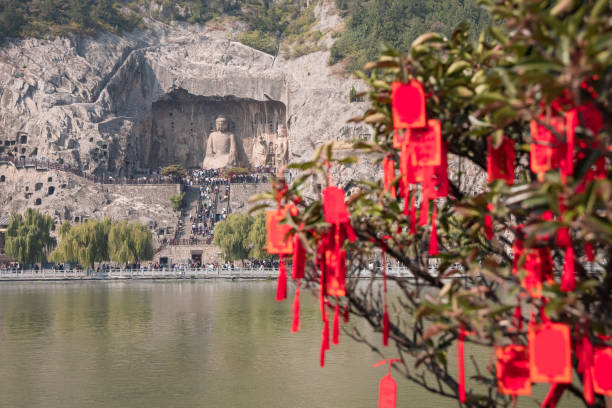
Longmen Si Zhuozhang.
Another captivating story involves the Dragon King, a mythical figure believed to have dwelled in the nearby waters. According to local folklore, the Dragon King would protect the temple and its devotees from natural disasters, ensuring that the waters flowed harmoniously and the land remained fertile. This legend underscores the temple’s connection to nature and the reverence the local community holds for the deity.
Cultural Significance
Longmen Si Zhuozhang is not merely an architectural marvel; it is also a cultural hub that reflects the spirit of the region. The temple hosts various festivals and ceremonies throughout the year, drawing both locals and travelers who seek to immerse themselves in the vibrant traditions of Chinese Buddhism.

Longmen Si Zhuozhang.
Visitors can participate in rituals, admire the intricate carvings, and listen to the soothing chants that echo through the temple halls. The serene environment invites reflection and contemplation, allowing visitors to connect with China’s profound spiritual heritage.
Conclusion
As you wander through the temple grounds of Longmen Si Zhuozhang, you are stepping into a living history. The echoes of ancient prayers, the stories etched into its stones, and the breathtaking views of the surrounding mountains create an unforgettable experience. This sacred site not only offers a glimpse into the past but also invites you to be part of a continuing legacy that honors both history and legend.
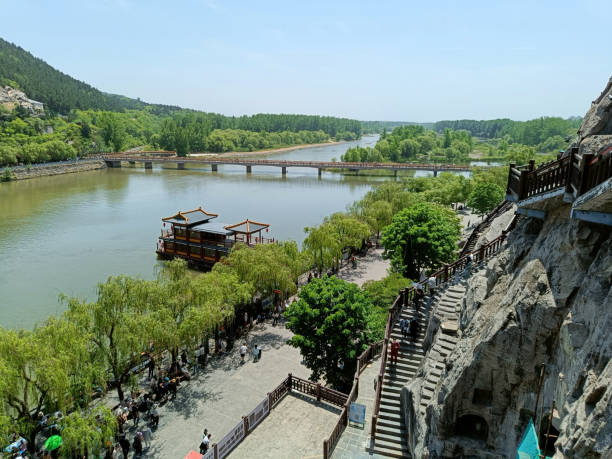
Longmen Si Zhuozhang.
Main Highlights: What You Absolutely Can’t Miss
Unmissable Highlights of Longmen Si Zhuozhang
Longmen Si Zhuozhang, nestled in the serene landscape of Changzhi, is a historic gem that offers a glimpse into China’s rich cultural tapestry. This temple, founded during the Northern Qi Dynasty, is not just a spiritual sanctuary but also a treasure trove of architectural marvels and natural beauty. Here’s a detailed guide to the main attractions that you absolutely cannot miss during your visit.
1. The Temple’s Architectural Splendor
-
Daxiong Hall (Great Hall): Dating back to the Northern Song Dynasty, this hall is a stunning example of ancient architecture. Its three-bay design and glazed ridge beasts create a striking silhouette against the sky. Make sure to admire the intricate woodwork that highlights its historical significance.
-
Heavenly King Hall: Known for its unique structural design, this hall showcases the craftsmanship of the Jin Dynasty. The varying cross-sections of the beams and purlins reflect the architectural ingenuity of ancient builders.
-
West Side Hall: This hall, built during the Later Tang Dynasty, is renowned for its lack of internal columns, demonstrating a remarkable engineering feat. Don’t miss the chance to explore its beautifully preserved Tang-style features.
2. The Natural Surroundings
-
Dragon’s Mouth Water Spout: One of the most picturesque spots within the temple complex, this natural water spout cascades dramatically, creating a soothing soundscape that enhances the tranquil atmosphere.
-
Stone Valley Dragon Gate: A breathtaking natural formation that provides stunning views of the surrounding landscape. The cliffs and valleys here are perfect for photography enthusiasts.
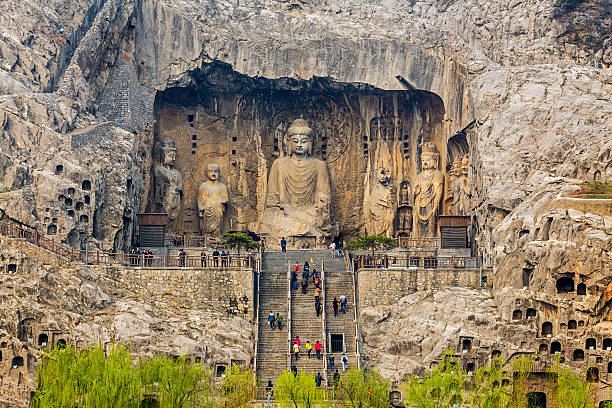
Longmen Si Zhuozhang.
3. Cultural and Historical Significance
-
The Eight Treasures of Longmen: Explore the renowned attractions within the temple, including the Bodhisattva Welcoming Guests and Cliff Stone Buddha. Each of these sites offers a unique insight into Buddhist artistry and philosophy, making them essential stops for history buffs.
-
Minghui Master Pagoda: Located in nearby Hongni Village, this ancient pagoda stands as a testament to the region’s rich cultural heritage. Its exquisite carvings and historical significance make it a must-visit.
4. Scenic Views and Outdoor Activities
-
Hongni Village: Just a stone’s throw from the temple, this ancient cliffside village is known for its stunning waterfall and traditional architecture. The village’s picturesque setting offers great opportunities for leisurely walks and exploration.
-
Taihang Grand Canyon: A short drive from Longmen Si Zhuozhang, this natural wonder features breathtaking views and numerous hiking trails. The canyon’s lush vegetation and crystal-clear streams provide an ideal backdrop for outdoor activities.
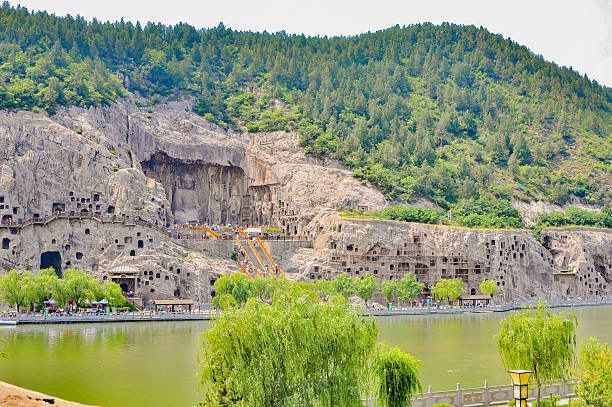
Longmen Si Zhuozhang.
5. Practical Information
- Location: Longmen Si Zhuozhang is situated in Pingshun County, Changzhi, Shanxi Province, China.
- Opening Hours: Daily from 8:00 AM to 7:00 PM.
- Accessibility: The temple is accessible via public transportation or rental cars, making it easy to incorporate into your travel itinerary.
Conclusion
Longmen Si Zhuozhang is more than just a temple; it is a harmonious blend of history, culture, and nature. Whether you are an architecture enthusiast, a history lover, or simply seeking peace in nature, this site provides an enriching experience that is quintessentially Chinese. Don’t forget your camera to capture the stunning landscapes and intricate details that will undoubtedly leave a lasting impression.
Planning Your Visit: A Practical Guide
Your Essential Guide to Visiting Longmen Si Zhuozhang
Longmen Si Zhuozhang, also known as Longmen Temple, is a captivating destination nestled in the scenic landscapes of Changzhi, Shanxi Province. Whether you are a history buff, a culture enthusiast, or simply seeking natural beauty, this ancient temple offers a unique glimpse into China’s rich heritage. To ensure you make the most of your visit, here’s a practical guide covering everything from transportation to accommodation.
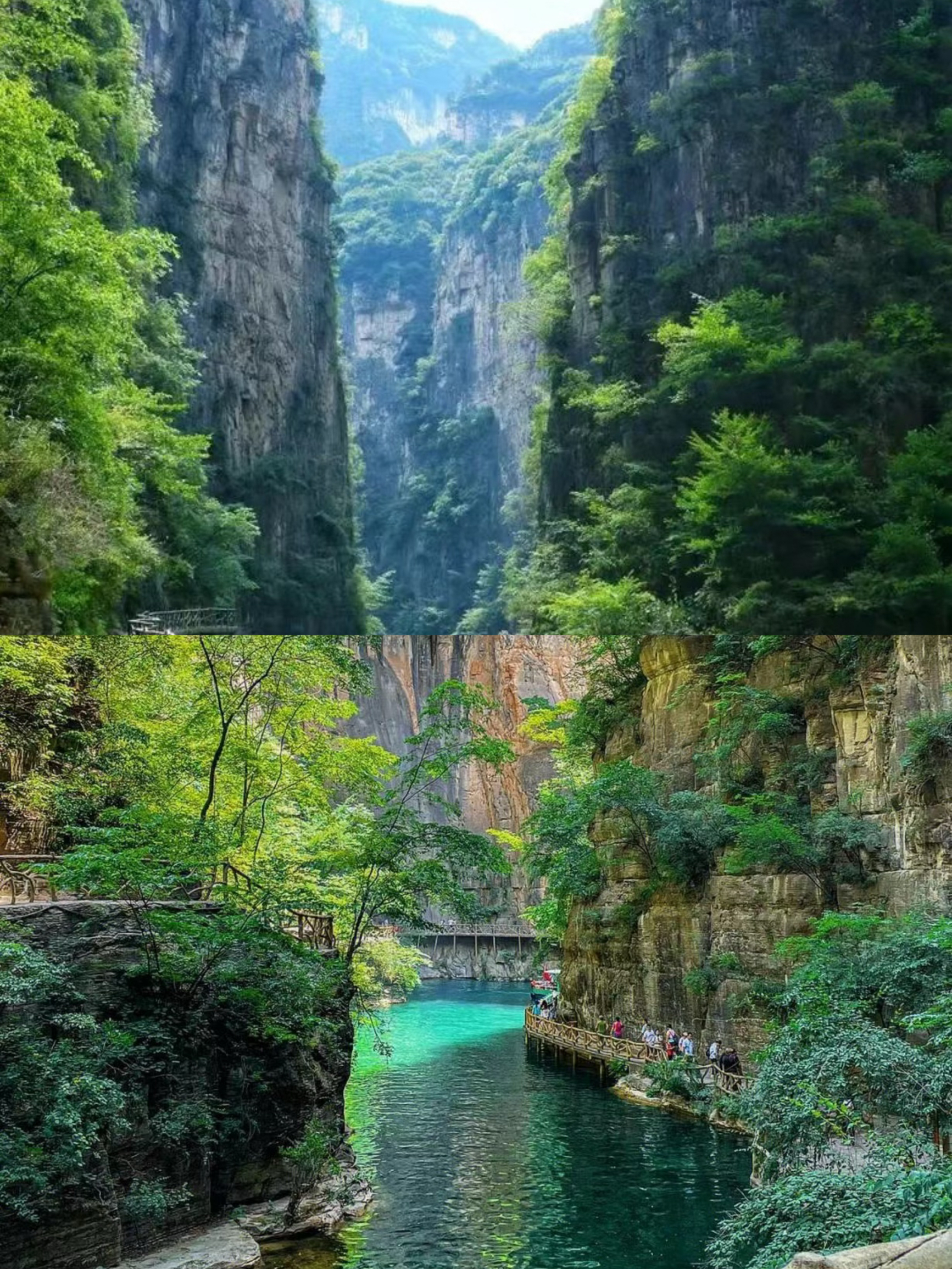
Longmen Si Zhuozhang.
Getting There
By Air
The nearest major airport to Longmen Si Zhuozhang is Changzhi Airport (CIH), which is about 30 kilometers away. Several domestic flights connect Changzhi with major cities like Beijing and Shanghai. Upon arrival at the airport, you can take a taxi or arrange for an airport transfer to reach the temple.
By Train
Changzhi is well-served by trains from cities across China. The Changzhi Railway Station is the primary hub, so check the schedule for trains that arrive from cities like Taiyuan or Jinan. From the train station, local taxis or ride-sharing services can take you directly to Longmen Temple.
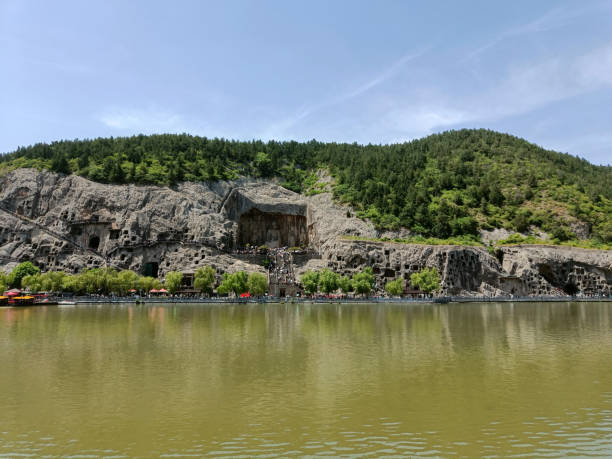
Longmen Si Zhuozhang.
By Car
For those who prefer to drive, renting a car offers the flexibility to explore the surrounding attractions at your own pace. Longmen Temple is easily accessible via the S324 provincial road.
Best Time to Visit
The ideal time to visit Longmen Si Zhuozhang is during spring (April to June) and autumn (September to November). These seasons boast mild temperatures and clear skies, perfect for exploring the temple grounds and taking in the stunning natural scenery. Summer can be hot and humid, while winter temperatures may drop significantly.
Entrance Fees and Hours
- Admission Fee: Approximately ¥30 (RMB). Prices may vary, so it’s advisable to check before your visit.
- Opening Hours: Daily from 8:00 AM to 7:00 PM. Last admission is typically an hour before closing.
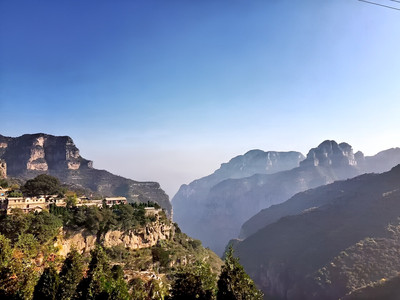
Longmen Si Zhuozhang.
Exploring Longmen Temple
Once at Longmen Si Zhuozhang, you’ll find a wealth of historical and architectural features to explore:
- Daxiong Hall: Built during the Northern Song Dynasty, this hall showcases intricate design and beautiful glazed roof ridges.
- The Eight Treasures of Longmen: A collection of significant attractions within the temple, including the Dragon’s Mouth Water Spout and the Cliff Stone Buddha.
- Scenic Views: The temple’s location offers breathtaking views of the surrounding mountains and valleys, making it a perfect backdrop for photography.
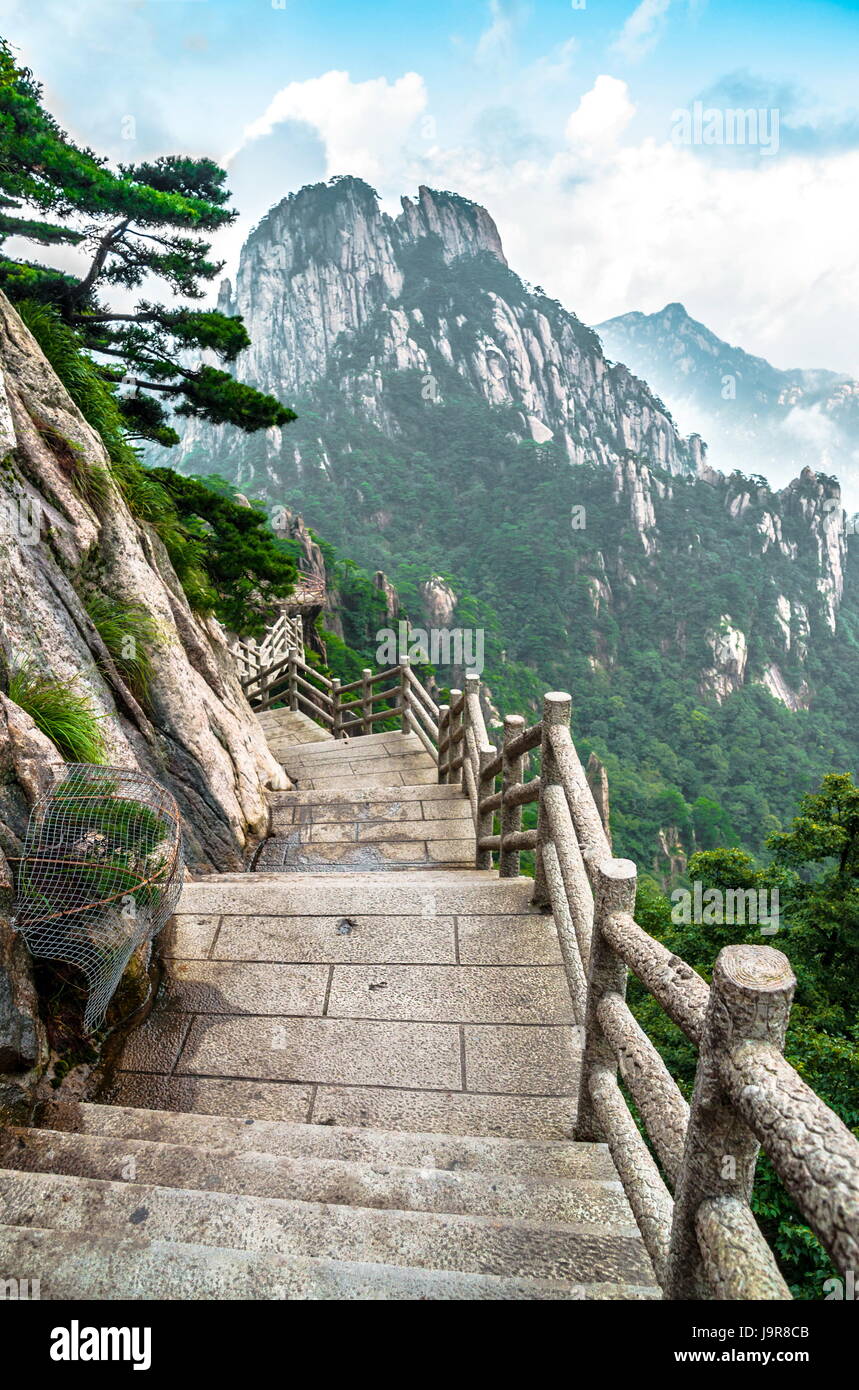
Longmen Si Zhuozhang.
Accommodations
While there are limited lodging options directly near Longmen Temple, Changzhi offers a variety of hotels to suit different budgets:
- Luxury: Changzhi International Hotel – A modern hotel with comfortable amenities, located in the city center.
- Mid-range: Jinjiang Inn Changzhi – Offers clean and comfortable accommodations at reasonable prices.
- Budget: Hostels and Guesthouses – Various options are available, providing a more intimate experience with local culture.
Transportation Within Changzhi
Local transportation options include taxis, buses, and bicycle rentals. Taxis are convenient for getting to the temple and other attractions, while buses can be a cost-effective way to explore the city. For the more adventurous, renting a bicycle allows you to experience the scenery at your own pace.
Nearby Attractions
Consider extending your visit to explore other attractions in the Changzhi area, including:
- Grand Canyon of Taihang: A stunning natural landscape offering hiking trails and breathtaking views.
- Hongni Village: A picturesque ancient village known for its cliffside homes and waterfalls.
- Changzhi Museum: Dive deeper into the local history and culture of the region.
Tips for Your Visit
- Dress Comfortably: Wear comfortable shoes and clothing, as exploring the temple may involve some walking and climbing.
- Stay Hydrated: Bring water, especially during warmer months, to stay refreshed while exploring.
- Respect Local Customs: As Longmen Temple is a place of worship, be mindful of your behavior and dress modestly.
With its rich history and serene landscapes, Longmen Si Zhuozhang promises an unforgettable experience. By following this guide, you can ensure a smooth and enjoyable visit to this remarkable site in China’s cultural tapestry.
Tickets: Prices, Booking, and Tips
When planning your visit to Longmen Si Zhuozhang (浊漳河龙门寺), it’s essential to be informed about ticket prices, booking options, and some handy tips to enhance your experience. This ancient temple, nestled in the picturesque landscapes of Pingshun County, offers a glimpse into China’s rich spiritual and architectural heritage.
Ticket Information
-
General Admission: The ticket price for Longmen Temple is approximately CNY 50 (around USD 7.50). This fee grants you access to the main temple grounds and several notable features within the complex.
-
Discounts: Reduced rates may be available for students, seniors, and children. Be sure to carry valid identification to avail of these discounts.
-
Combo Tickets: If you’re planning to explore other attractions in the area, check for combo tickets that might include admission to nearby sites like Hongnicun or the Grand Canyon of Taihang, which can be more economical.
Booking Options
-
Online Booking: To save time and secure your entry, consider booking tickets online through platforms like Trip.com or other travel service providers. Online bookings often come with the advantage of skipping long queues at the entrance.
-
On-site Purchase: If you prefer spontaneity, tickets can also be bought at the entrance. However, during peak tourist seasons, this may result in longer waits, so arriving early is advisable.
Visiting Tips
-
Best Time to Visit: The ideal time to visit Longmen Temple is during the early morning or late afternoon. This not only allows you to enjoy the serene ambiance but also provides excellent lighting for photography.
-
Guided Tours: Consider joining a guided tour for a richer understanding of the temple’s history and architecture. Knowledgeable guides can provide fascinating insights that enhance your visit.
-
Dress Code: As a place of worship, it’s respectful to dress modestly. Comfortable shoes are also recommended, as you may wish to explore the surrounding areas.
-
Weather Considerations: The region can experience varied weather. Check the forecast and prepare accordingly, especially if you plan to hike or explore the nearby natural attractions.
-
Cultural Etiquette: Be mindful of the local customs while visiting the temple. Observing silence and maintaining a respectful demeanor is appreciated, especially in sacred areas.
Armed with these details, you’re now ready to delve into the spiritual and cultural depths of Longmen Si Zhuozhang. Enjoy your journey through this magnificent historical treasure!
How to Get There: A Complete Transportation Guide
Arriving at Longmen Si Zhuozhang (Longmen Temple)
Longmen Si Zhuozhang, or Longmen Temple, is a historical gem nestled in the picturesque landscape of Pingshun County, near Changzhi, Shanxi Province. For international travelers eager to experience this cultural marvel, understanding the transportation options available is essential for a seamless visit. Here’s a comprehensive guide to getting there.
By Air
Nearest Airport: Changzhi Wangcun Airport (CIH)
– Location: Approximately 50 kilometers from Longmen Temple.
– Flight Options: Regular domestic flights connect Changzhi with major cities like Beijing, Shanghai, and Xi’an. International travelers may need to transit through these cities before arriving in Changzhi.
Getting from the Airport to Longmen Temple:
– Taxi: The most direct option. Expect a fare of around ¥120-¥150 and a travel time of about 1 hour.
– Airport Shuttle: Limited services may be available. Check local schedules upon arrival.
By Train
Train Stations:
– Changzhi Railway Station: The main station serving the area, approximately 60 kilometers from Longmen Temple.
– Pingshun Railway Station: Closer at about 30 kilometers, but with fewer services.
Train Travel:
– From Beijing: High-speed trains take around 4-5 hours to Changzhi Railway Station.
– From Xi’an or Taiyuan: Regional trains run frequently, with travel times ranging from 3 to 6 hours.
From the Train Station to Longmen Temple:
– Taxi: A quick ride from either station will take around 30-40 minutes and cost approximately ¥80-¥100 from Changzhi Railway Station, while it’s about ¥40-¥60 from Pingshun Railway Station.
By Bus
Long-Distance Buses:
– Changzhi Long-Distance Bus Station: Regular buses operate from various cities, including Taiyuan and Datong.
– Buses to Pingshun County are frequent, with travel times ranging from 1.5 to 3 hours depending on the city of origin.
Local Transport:
– Once in Pingshun County, you can hire a taxi or use local minibus services to reach Longmen Temple, which is about a 20-minute drive from the county center.
By Car
Driving Directions:
– If you prefer to drive, renting a car is a convenient option. Longmen Temple is accessible via the S324 provincial road.
– From Taiyuan: The drive is approximately 2 hours (around 130 kilometers).
– From Changzhi: Expect about 1 hour of travel time (approximately 60 kilometers).
Local Transportation
Once you arrive at Longmen Temple, you’ll find that the area is well-maintained and pedestrian-friendly. However, options are available if you prefer not to walk:
– Taxis: Easily available for short distances.
– Bicycle Rentals: A great way to explore the surrounding scenic areas at your own pace.
Tips for International Travelers
- Language: Basic Mandarin phrases can go a long way, as not all locals may speak English.
- Payment: Mobile payment apps (like WeChat Pay and Alipay) are popular, but having cash (Renminbi) on hand is advisable for smaller vendors.
- Travel Apps: Download local navigation and translation apps to assist in your travels.
With this guide, you’re now equipped to make your journey to Longmen Si Zhuozhang as smooth and enjoyable as possible. Prepare to immerse yourself in the rich history and stunning landscapes that await at this remarkable destination!
Local Cuisine and Accommodation Nearby
Culinary Delights and Comfortable Stays Near Longmen Si Zhuozhang
As you explore the historical and cultural wonders of Longmen Si Zhuozhang, your journey wouldn’t be complete without indulging in the local cuisine and finding a cozy place to rest. Here are some recommendations to enhance your experience in this enchanting region of Shanxi Province.
Local Cuisine to Savor
-
Shanxi Noodles (刀削面, Dāoxiāomiàn)
A must-try dish, these hand-sliced noodles are celebrated for their chewy texture and are often served in a savory broth with tender slices of meat and fresh vegetables. Don’t forget to ask for a side of vinegar for that authentic flavor enhancement. -
Pork Buns (山西肉夹馍, Shānxī ròujiāmó)
These delightful steamed buns filled with succulent pork are a street food staple in Shanxi. The buns are fluffy, and the meat is marinated to perfection, offering a burst of flavors with every bite. -
Mushroom Hot Pot (蘑菇火锅, Mógū huǒguō)
Ideal for sharing, this hot pot features a variety of fresh mushrooms and vegetables, all cooked at your table. It’s a communal dining experience that encourages interaction and is particularly comforting on cooler days. -
Sweet and Sour Hawthorn (山楂球, Shānzhā qiú)
For a unique dessert, try this traditional treat made from hawthorn berries. They are often coated in sugar syrup and served on a stick, providing a sweet and tangy finish to your meal.
Comfortable Accommodations Nearby
-
Longmen Hotel (龙门宾馆)
Located conveniently close to Longmen Temple, this hotel offers comfortable rooms with modern amenities. Guests can enjoy beautiful views of the surrounding mountains and easy access to local attractions. The onsite restaurant serves a variety of local dishes, making it a convenient choice for travelers. -
Pingshun International Hotel (平顺国际酒店)
A bit further from the temple, this hotel offers luxurious accommodations with a blend of traditional and contemporary design. The hotel features spacious rooms, a fitness center, and a restaurant serving both local and international cuisine. -
Zhangze Reservoir Tourist Area Guesthouse (张泽水库旅游区宾馆)
For a more rustic experience, consider staying at this guesthouse situated near the picturesque Zhangze Reservoir. It offers a peaceful retreat with basic amenities and is perfect for those looking to immerse themselves in nature. -
Minghui Ancient Village Homestay (明辉古村民宿)
Experience local culture firsthand by staying in a traditional homestay in Hongni Village. This option allows you to enjoy authentic local meals and the warm hospitality of the villagers, giving you a deeper understanding of the region’s heritage.
Conclusion
Whether you’re indulging in Shanxi’s distinctive flavors or resting in one of its charming accommodations, your visit to Longmen Si Zhuozhang is sure to be enriched. Make sure to take the time to savor the local culinary delights and enjoy the hospitality that this historical region has to offer.
Frequently Asked Questions
Frequently Asked Questions about Longmen Si Zhuozhang (Longmen Temple)
1. What is Longmen Si Zhuozhang (Longmen Temple) known for?
Longmen Temple, established during the Northern Qi Dynasty, is renowned for its stunning architecture and rich history. It features significant attractions like the Dragon’s Mouth Water Spout and the Cliff Stone Buddha, collectively known as the “Eight Treasures of Longmen.” The temple’s serene setting amidst towering peaks and steep cliffs enhances its spiritual ambiance, making it a key cultural site in Shanxi Province.
2. How do I get to Longmen Temple?
Longmen Temple is located in Pingshun County, Changzhi City, Shanxi Province. You can reach the temple by taking a train or bus to Changzhi, followed by a taxi or local transportation to the site. If you prefer driving, rental services are available in the city.
3. What are the opening hours of Longmen Temple?
Longmen Temple is open to visitors daily from 8:00 AM to 7:00 PM. It’s advisable to arrive early to fully explore the expansive grounds and appreciate the site’s historical significance.
4. Is there an entrance fee?
Yes, there is an entrance fee to visit Longmen Temple. The fee helps maintain the facilities and preserve the temple’s historical artifacts. It’s best to check online or at local tourism offices for the latest pricing information.
5. What should I wear when visiting Longmen Temple?
Visitors are encouraged to wear comfortable clothing and sturdy shoes, as the temple complex involves some walking and climbing. Modest attire is also recommended out of respect for the religious site.
6. Are there guided tours available?
Yes, guided tours are available for those interested in a deeper understanding of the temple’s history and architecture. Local guides can provide valuable insights into the significance of various structures and the stories behind them.
7. What other attractions are nearby?
In addition to Longmen Temple, the surrounding area offers numerous attractions. Notable sites include Hongni Village, known for its stunning cliffside views, and the Taihang Grand Canyon, which provides breathtaking natural scenery and outdoor activities.
8. Is Longmen Temple accessible for people with disabilities?
While efforts have been made to improve accessibility, the temple’s mountainous location and traditional architecture may present challenges. It’s advisable to contact the temple administration in advance to inquire about specific accommodations for visitors with disabilities.
Feel free to reach out if you have more questions or need assistance planning your visit to this beautiful historical site!
Final Thoughts on Your Trip
As your journey through the enchanting landscapes and rich historical tapestry of Longmen Si Zhuozhang comes to a close, take a moment to reflect on the myriad of experiences that have shaped your adventure. This serene temple, nestled amidst the breathtaking mountains and valleys of Shanxi, is not just a destination; it is a gateway to centuries of Chinese culture and spirituality.
Embrace the Legacy
Longmen Temple, with its intricate architecture and storied past, offers a glimpse into the spiritual heart of the region. As you wander its sacred halls, consider the monks and pilgrims who have come before you, seeking solace and enlightenment. This is a place where time seems to stand still, inviting you to pause and absorb the tranquility that envelops it.
Nature’s Embrace
Beyond the temple, the stunning natural beauty of the Taihang Grand Canyon and Tianji Mountain awaits your exploration. The lush greenery, cascading waterfalls, and rugged cliffs are a reminder of the awe-inspiring power of nature. Take the time to hike along the scenic trails or simply sit by a stream, allowing the sounds of the flowing water to wash over you—a perfect way to reflect on your experiences.
Cultural Richness
Hongni Village, with its ancient architecture and vibrant local culture, is a testimony to the enduring spirit of Shanxi’s heritage. Engage with the locals, savor traditional dishes, and immerse yourself in the stories that echo through the stone walls of this captivating community.
Final Reflections
As you prepare to depart from Longmen Si Zhuozhang, carry with you the memories of this unique journey—moments of peace, discovery, and connection. Whether it was the serenity of the temple, the majesty of the mountains, or the warmth of the village, let these experiences inspire you to share the rich history and culture of this remarkable region with others.
May your travels continue to be filled with wonder, and may the spirit of Longmen Temple guide you to new adventures in the world beyond. Safe travels!